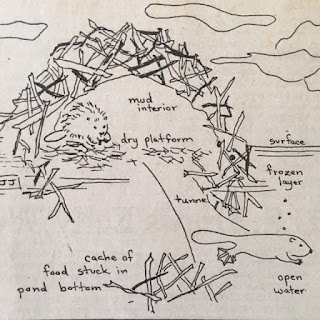April 22, 2020 -- A Different Kind of Story Hour
I miss you so much, but I’m glad we are all trying together to stay healthy!
Many other libraries have done online Story Hours , so I decided to try something different. Please understand that I have no idea what I’m doing!
Instead of reading books, I’m going to “read” that greatest of all wonder books, the natural world, and try sharing some of my walks and thoughts with you via little videos. I’m figuring it out as I go along, so the videos will be very shaky and unedited, but I hope that will inspire you to jump in and try making videos of your own nature observations.
After each walk, I’ll also post photos, links to websites, titles of actual books that you could borrow from us for more information, and maybe a few ideas for activities.
Wood Frogs at a Vernal Pond
Join us on this walk in early April at Half Moon State Park in Hubbardton, VT:
https://www.youtube.com/watch?v=grdWaMPDzAk
These frogs are amazing. Their bodies can actually freeze solid without harm to the frogs. An increase in glucose (sugar) in their blood helps to protect their tissues and organs. They’re often the earliest frog heard singing in spring, usually before the is has melted. More about this…
Look at the photo to see some key features for identifying wood frogs:
black masks
white lips and throats
tan skin (color can vary)
dorsolateral ridges (dorsal means “back” and lateral means “at the side”) – can you see the raised line curving from its mask over the side of its back?
backpack straps – you can see these better in this photo:
I think I first learned about wood frogs from Jim Andrews who is a great herpetologist (that’s someone who studies amphibians and reptiles). You can see him at work in winter in this short video where he talks about The Vermont Reptile and Amphibian Atlas.
The photos on this page come from the atlas. Explore the atlas website (click above) to learn about all the herps in Vermont and see how you can submit your observations to the atlas. Check to see what’s been found in your town!
What else can you do?
Learn VT geography. Find your town on the species maps in the atlas. Do you notice any patterns in how the different species are distributed across Vermont? Think about where the mountains and lakes are – how does that influence habitat? Does weather have an effect?
Study frogs by drawing them. The drawing at the top of the page helped me learn some of the key features of wood frogs and spring peepers. Can you see the “X” on the back of the peeper, and the mask and ridges on the wood frog?
Take a look at their scientific names written on the old drawing, and compare them to the names in the atlas. Names often change when scientists learn new information about classification of living things. Rana means frog in Latin and is the family name for the true frogs. Sylvatica or sylvaticus means living in the forest. Try learning some Latin or Greek by looking up more scientific names. You could start your own dictionary!
Walk to a nearby pond to search for tadpoles and egg masses.
Borrow the book Spring Pool: A Guide to the Ecology of Temporary Ponds by Ann Downer
Borrow the DVD “Rattlers, Peepers and Snappers” from the library.




Comments
Post a Comment